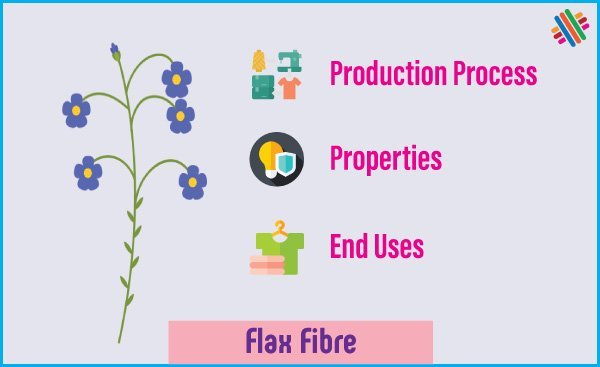Updated Textile Fibre List [A – Z]
Last updated on October 22nd, 2023 at 12:58 am
When you buy your favorite dress, you must know about the fibre content of what you are buying. As fibre content is so important for your comfort. For summer, you prefer cotton, but in the winter, wool is preferable.

Textile fibre is a kind of material that can be spun into yarn, and the yarn can be knitted or woven into fabric. Textile fibre can be divided into three main categories. They are natural, man-made, and regenerated. But day by day, due to the development of technology, fashion designers have been able to discover different types of synthetic as well as natural fibre. They are using these fibres for new designs, comfort, and sustainability.
In general, fibres can be categorized as vegetable, animal, mineral, inorganic, regenerated, synthetic, and semi-synthetic. Now we will know about all these textile fibres.
Vegetable Fibre List
Apparently, the fibres that we get from plants are mainly vegetable fibres. But practically, it may be any plant containing cellulose and other components in its bark, leaf, or seed. The fibres can be extracted from different plant parts, mainly from the cellulosic portion. The detailed list is given below:
- Abaca
- Banana
- Cotton
- Jute
- Kapok
- Linen
- Lotus Silk
- Organic Cotton
- Pima Cotton
- Pina
- Ramie
- Sisal
- Supima Cotton
- True Hemp
- Upland Cotton

Animal Fibre List
Animal fibres are natural fibres obtained from animal skins, fur, hairs, and cocoons (silk), also known as protein fibre. These fibres are classified into two main categories: wool (sheep, goats, camels, rabbits) and specialty animal (alpaca, vicuña, angora) fibres. Here is the detailed list:
- Alpaca
- Angora
- Camel Hair
- Camel Wool
- Cashgora
- Cashmere
- Eri Silk
- Lamb’s Wool
- Llama Wool
- Merino Wool
- Mohair Wool
- Rabbit
- Silk
- Spider Silk
- Vicuna Wool

Mineral Fibre List
Mineral Fibres are inorganic, natural fibres made of minerals extracted from mines. These are popular for their ability to withstand high temperatures and acoustic insulation. Its use of asbestos has primarily declined due to health risks. On the brighter side, other mineral fibres like rock wool and basalt fibre have gained favor as safer alternatives, particularly in construction and industrial applications. Here is the detailed list:
- Asbestos
- Glass
- Basalt
- Rock Wool (Mineral Wool)
Inorganic Fibre List
Inorganic fibres are those materials that steer clear of any carbon-based components. They’re mainly crafted from minerals and other non-organic compounds. These are very important in industrial settings because they can endure high temperatures and stand up to fire. You’ll often find them put to good use in various industries, where they serve functions like providing thermal insulation and reinforcing materials in automobiles and aircraft. Here is the detailed list:
- Gold
- Carbon
- Ceramic
- Copper
- Inox Metallised Fibre
- Lurex Metallised Fibre
- Metallic

Regenerated Fibre List
Regenerated fibre is a unique cellulosic fibre category treated and re-produced chemically. At first, natural materials, usually rich in cellulose, like wood pulp from trees or bamboo, is prepared, and then chemicals are used to turn them into newly manufactured fibres. Here is the detailed list:
- Alginate
- Azlon
- Cuprammonium Rayon
- Cupro
- Kemira Viscose
- Modal
- Polynosic
- Rayon
- Viscose
- Viscose From Bamboo

Synthetic Fibre List
Synthetic fibres are manufactured textile materials produced through chemical processes using various synthetic polymers.
- Acrylic
- Aquator Tactel Nylon
- Aramid
- Biconstituent Fibre (Polyester 85% Nylon 15%)
- Chlorofibre
- Coolmax Polyester
- Dralon Acrylic
- Elastane
- Elastodiene
- Elastolefin
- Elastomultiester
- Elite Polyester
- Fluoro
- Hollofil Polyester
- Ingeo Polyactide
- Kevlar
- Kodel Polyester
- Melamine
- Meryl Nylon
- Modacrylic
- Nomex
- Nylon
- Polartec Polyester
- Polyamide
- Polycarbamide
- Polyester
- Polyethylene
- Polylactide
- Polypropylene
- Polyurethane
- Supplex Nylon
- Tactel Nylon
- Taslan Nylon
- Trivinyl
- Vinyl

Semi-Synthetic Fibre List
Semi-synthetic fibres are like regenerated cellulosic fibres. At first, these are collected from various natural sources, primarily cellulose. Then, they are chemically treated and given a unique and specific property.
- Acetate
- Lyocell
- Promix Fibres
- Tencel
- Triacetate
You may also like: List of all Textile Fibre



